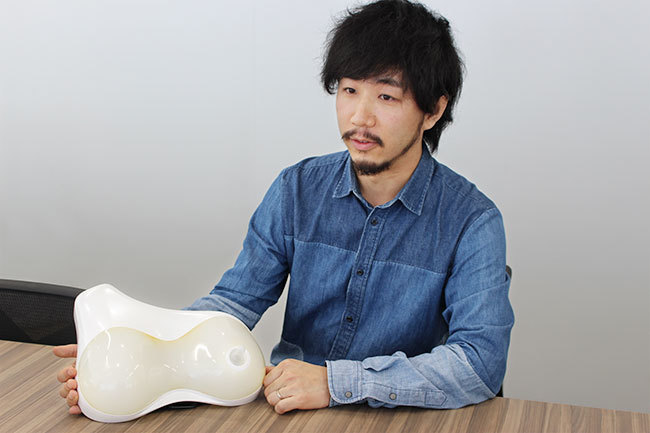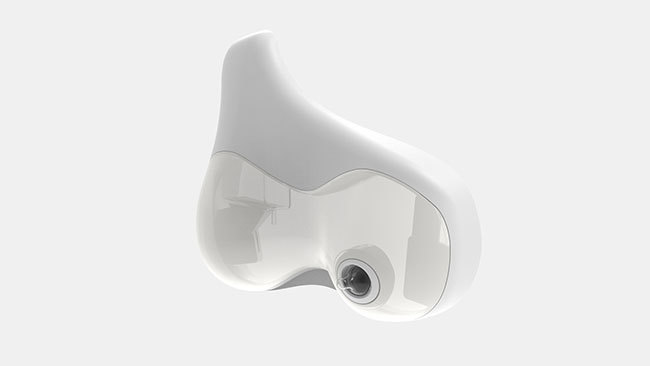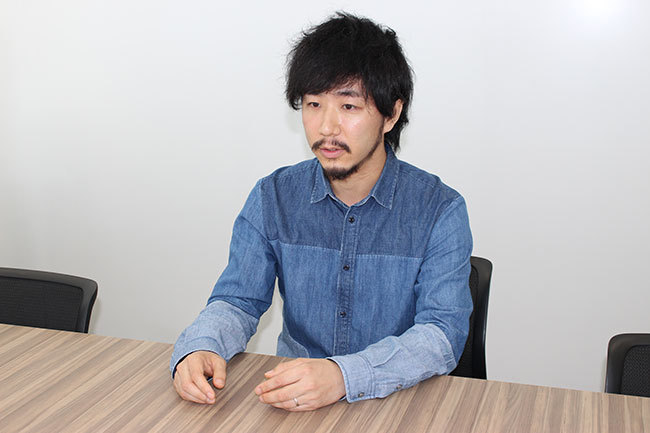Every spring, the "South by Southwest" (SXSW) festival takes place in the United States. This event draws numerous companies and creators from around the world, showcasing forward-thinking works in music, film, and interactive media. The Interactive section, where new technologies and business ideas converge, is particularly famous for having unveiled services like Twitter and Airbnb, which later became global hits, capturing significant attention. This year, too, various "seeds" of business were announced.
As mentioned in Part 1 of this series, Dentsu Inc. also exhibited four works under the concept "Pointless Brings Progress." This series focuses on the creators responsible for the works and their production, delving into each individual's story.
This time, we introduce Mr. Osamu Takahashi (Art Director, Creative Planning Division 1 of Dentsu Inc.) who exhibited 'FATHER'S NURSING ASSISTANT'. Through the behind-the-scenes story of creating this product, born from the desire 'to let fathers nurse babies too', we hear about what Takahashi values as a creator and his future outlook.

Mr. Satoshi Takahashi (Dentsu Inc., Creative Planning Division 1)
Observing his sister's family revealed the imbalance in "putting the baby to sleep"
―First, could you tell us about the development background of "FATHER’S NURSING ASSISTANT"?
It's a wearable device designed so fathers, just like mothers, can feed and put babies to sleep. The product resembles a woman's breast, incorporates a milk tank, and recreates a form close to a baby nursing from its mother.
During development, we consulted pediatricians and learned that babies often place their hands on the breast during feeding. They find comfort in the breast's softness, warmth, and the heartbeat they feel. This is part of forming attachment. Therefore, we focused on the product's texture, designing it to closely resemble the mother's breastfeeding state. The nipple section also incorporates sensing technology. When the baby sucks, it detects the action and transmits the data to an app for tracking.


"FATHER'S NURSING ASSISTANT" Main Unit
The reason for developing this was simple. Watching my sister's family, whenever the child started crying, my sister would often soothe and put them to sleep. When she breastfed them, they would stop crying instantly and fall asleep before you knew it. I found it fascinating, and at the same time, I simply thought it would be great if dads could do the same thing.
Researching childcare data later confirmed that "breastfeeding" and "putting the baby to sleep" tend to be heavily skewed toward mothers. This is because feeding isn't just about nutrition; it also helps babies relax and fall asleep easily, making it effective for bedtime routines. Co-sleeping while breastfeeding is also common. Conversely, relying too much on this often leads to babies struggling to fall asleep without their mother. Therefore, I reasoned that if tools could expand the pool of people capable of handling this childcare task, it would halve the mother's burden.
Another interesting data point we found was that "Japanese babies have the shortest sleep duration in the world" (*). While various reasons are speculated, factors include parents' longer working hours compared to other countries and relatively small living spaces. This means that even after the baby is put to sleep, someone coming home late at night can wake the baby with noise. We believe this product could be meaningful in addressing these challenges.
※Source: 'Cross-cultural differences in infant and toddler sleep' J. Mindell et al. Sleep Medicine Vol.11, 2010
I want to create something that becomes second nature
―What are Mr. Takahashi's thoughts and particular focus behind "FATHER'S NURSING ASSISTANT"?
I hope this product can support not only "women's advancement in society" but also "men's involvement in the home." Supporting fathers in childcare helps mothers too, and above all, it should benefit the baby. While systems like parental leave are starting to improve, I want this to become a more concrete tool for supporting men in childcare.
It's not just for fathers; I think it can be useful in various situations, like for grandparents watching their grandchildren. I hope it can be "one option" for childcare, helping those who are struggling.
After all, everyone has things they're not good at or simply can't do. I want to solve those problems with some kind of tool, making it possible for everyone. For example, when reaching for something high up, tall people can probably get it without help, but shorter people use a step stool. That's the kind of image I have – creating something that can be used casually yet solves a problem.
This project started from thinking, "If only dads could help with breastfeeding and putting the baby to sleep." I want to create things that address latent needs in daily life – challenges many people feel but haven't brought to the surface.
When expanding ideas, I imagine whether the product will retain value years after entering the world. Or whether it inherently possesses enduring value. I aim for things that become "commonplace in the world" or "always there."
Of course, some things need immediate impact. But my ideal is seeing people I know—like local friends or even my own grandparents—who aren't interested in the industry, just naturally interacting with something I helped create. And then, secretly thinking to myself, "Hey, I made that" (laughs). That's how I want to create things that become commonplace.

When you face big challenges or discoveries, great things naturally emerge
―Was there a specific moment that sparked this way of thinking?
Several years ago, I had the opportunity to create new souvenirs and promotional products for a region. That experience was significant. Even now, years later, the souvenirs and products I worked on are still there—in station shops, event spaces, and product fairs. That makes me happy. It made me want my creations to exist as a matter of course, to make the world a little better and people's lives a little more enjoyable.
However, to create something that becomes commonplace, it's crucial to thoroughly explore the original challenge or mission.
My approach to work starts with ideas like "Wouldn't it be nice if there was something like this?" based on my own daily life and real experiences. But my knowledge and experiences are limited. I must thoroughly explore whether this is truly a challenge for many people and for society. This time, I also started from personal experience, but then I interviewed pediatricians and meticulously researched childcare data. This was to verify whether there was indeed a societal need and to find supporting evidence.
Through this process, we discovered data showing that "the burden of breastfeeding and putting babies to sleep is disproportionately on women." Beyond that, it led to even larger challenges and new discoveries, such as "Japanese babies have the shortest sleep duration in the world." When you find a significant challenge or discovery, simply thinking of a straightforward solution should naturally lead to a good product.
I want to continue working on products and services that eliminate the negatives people feel, or turn zero into a positive.






